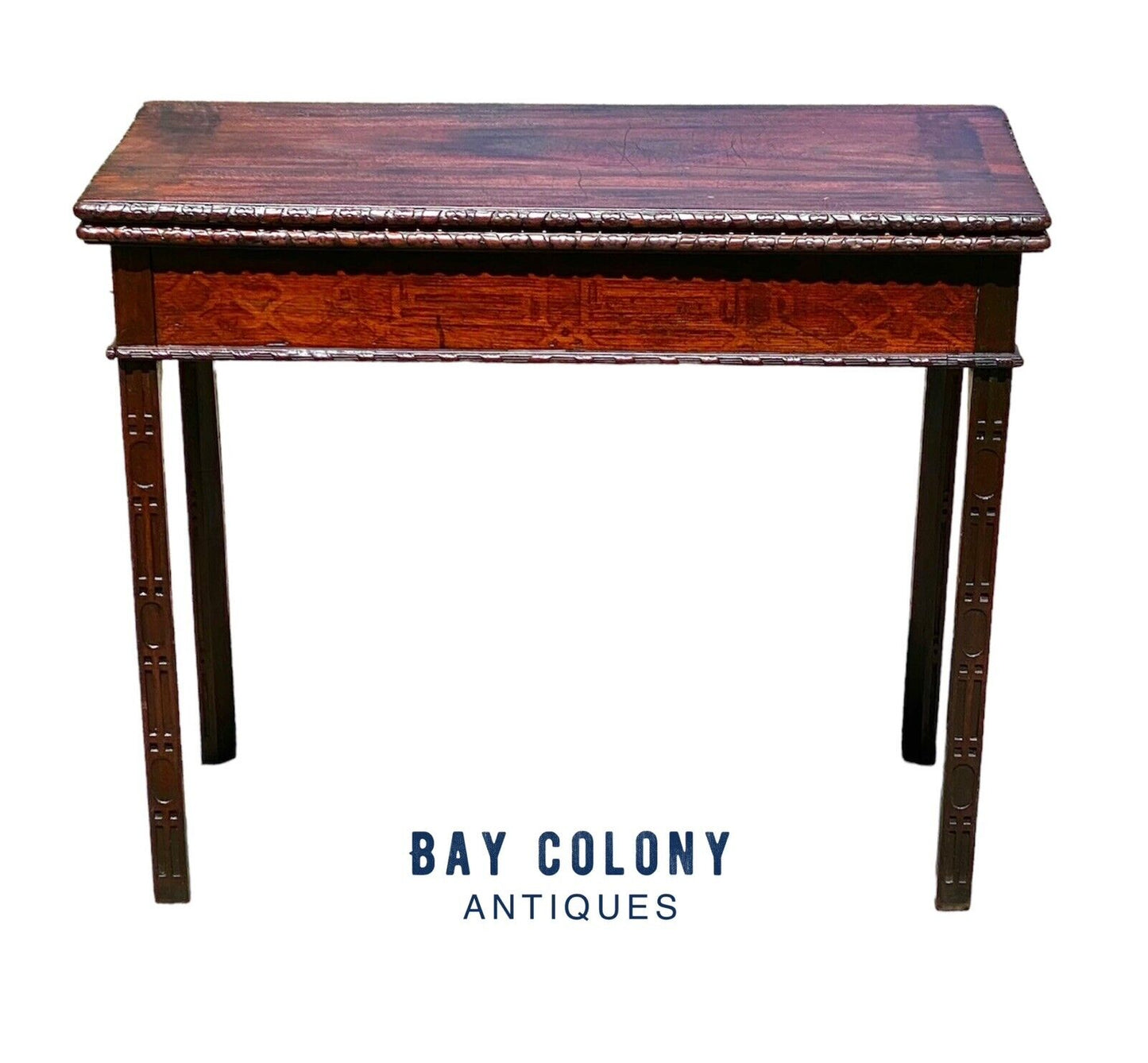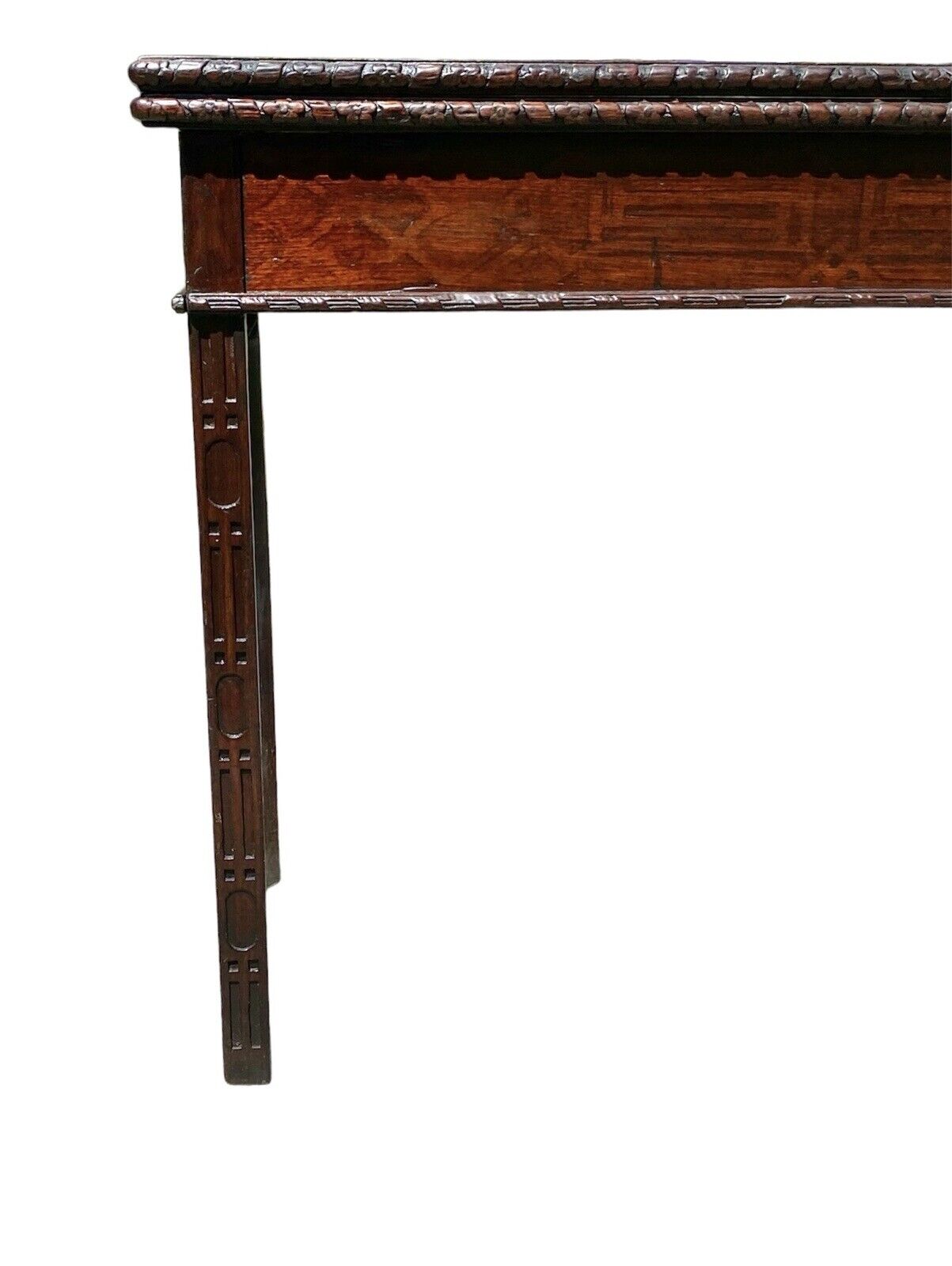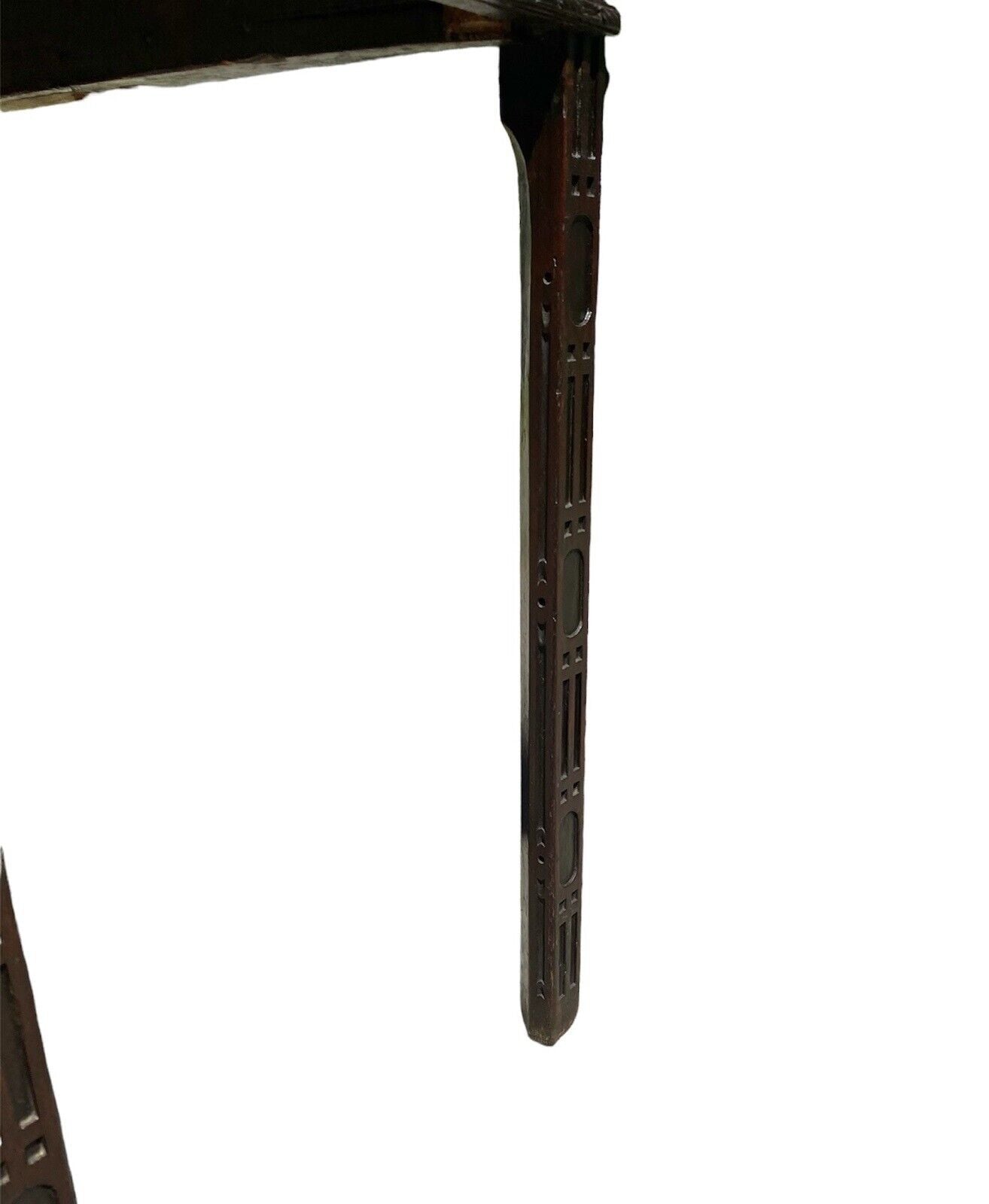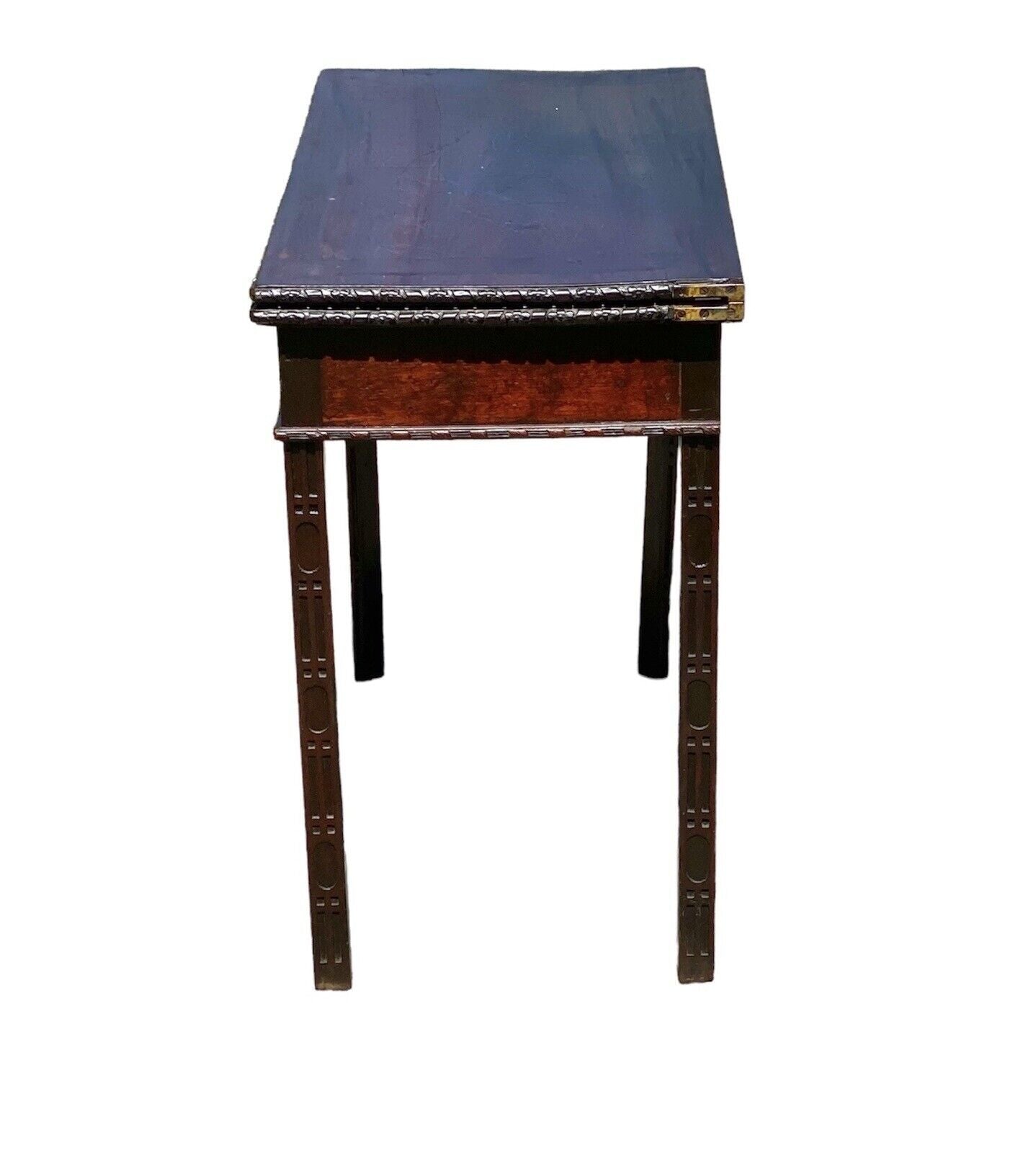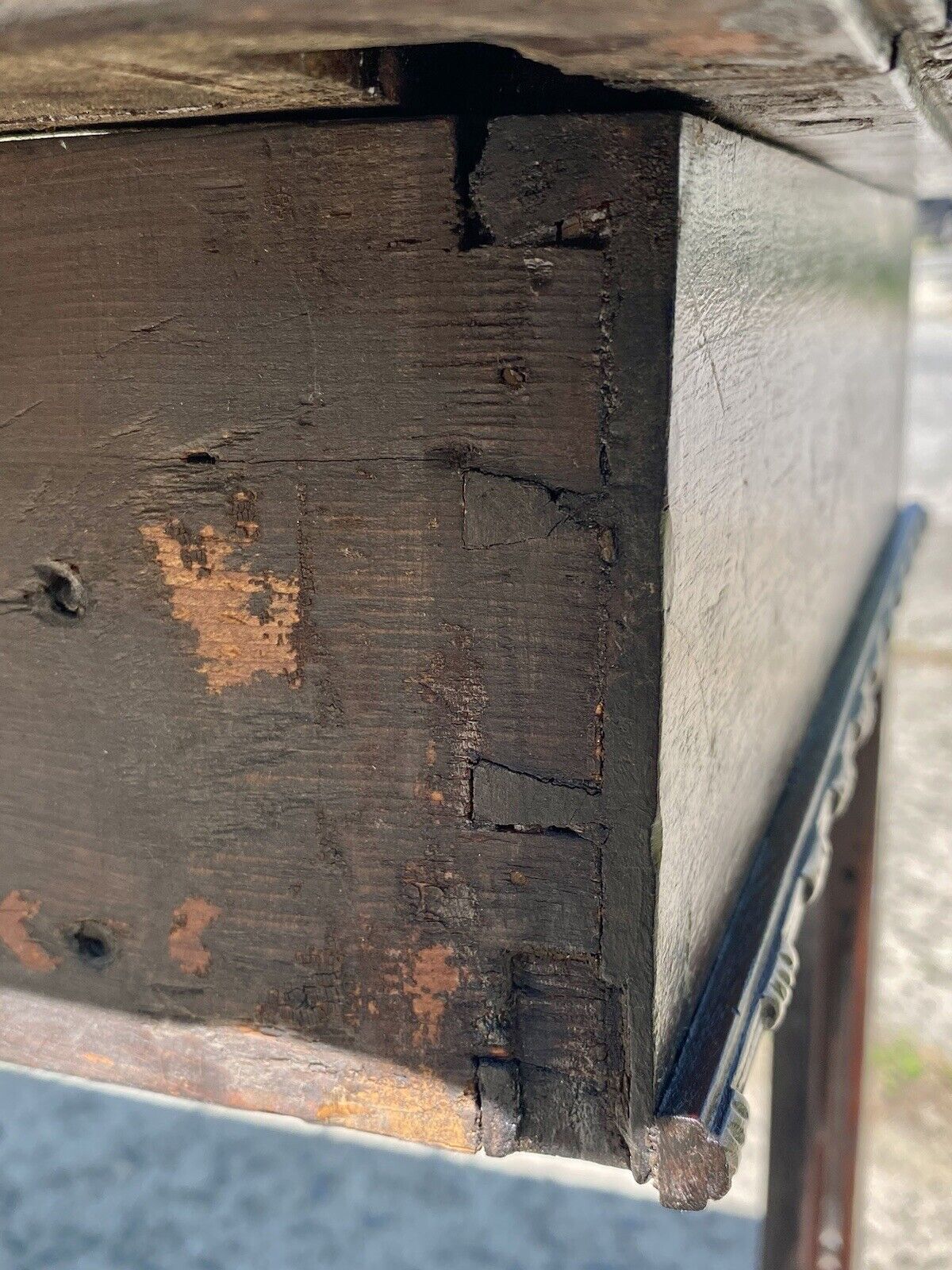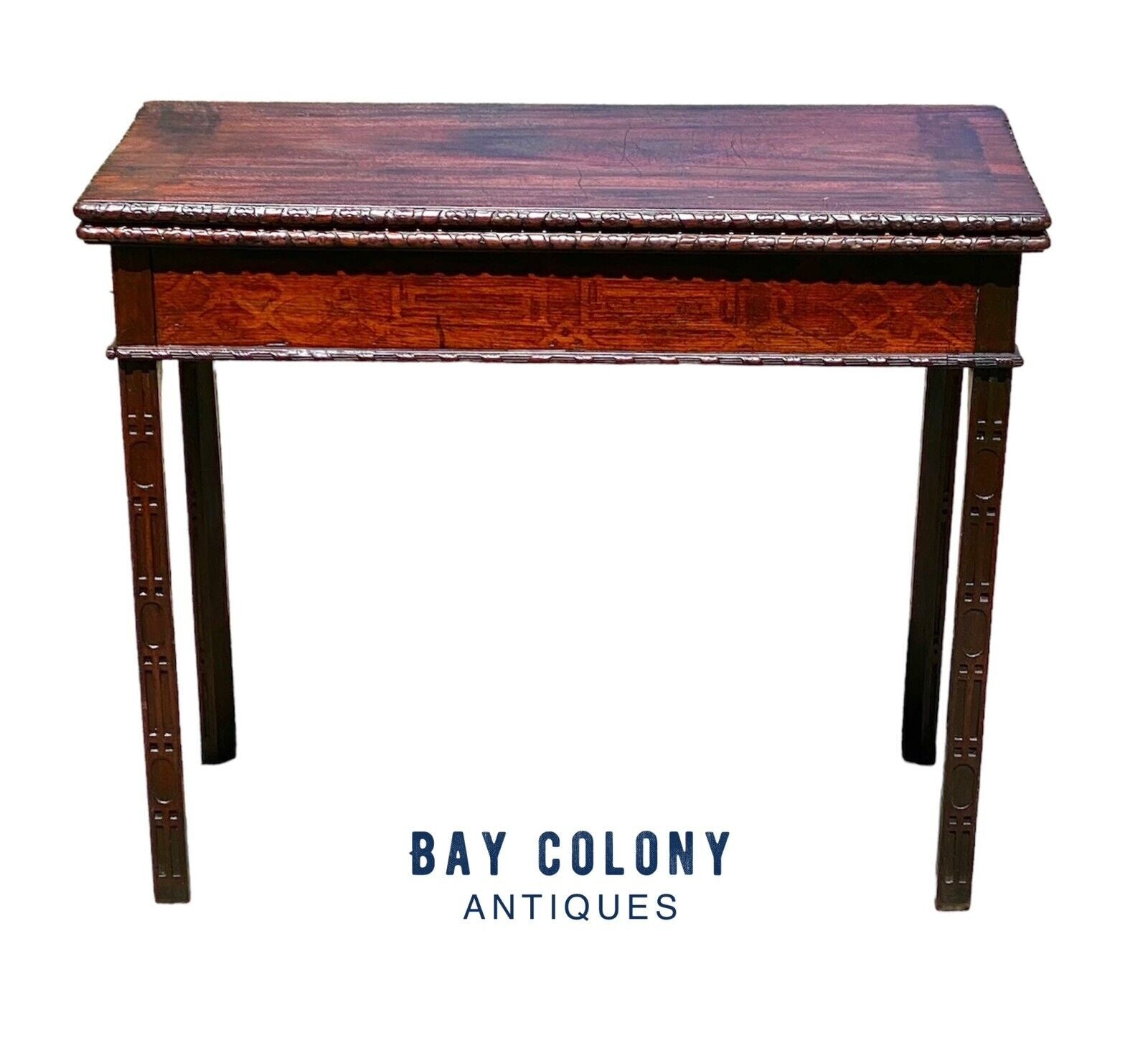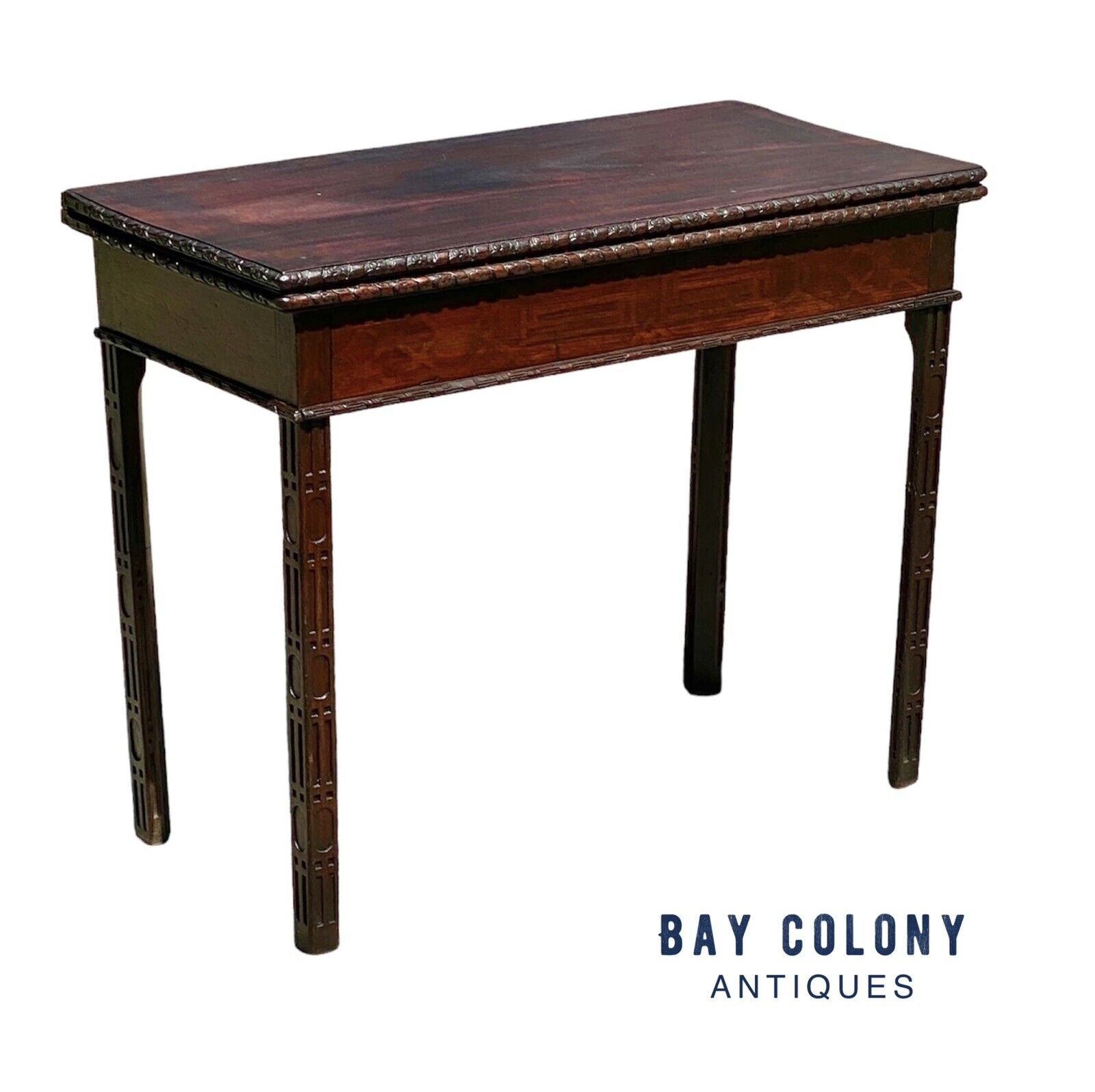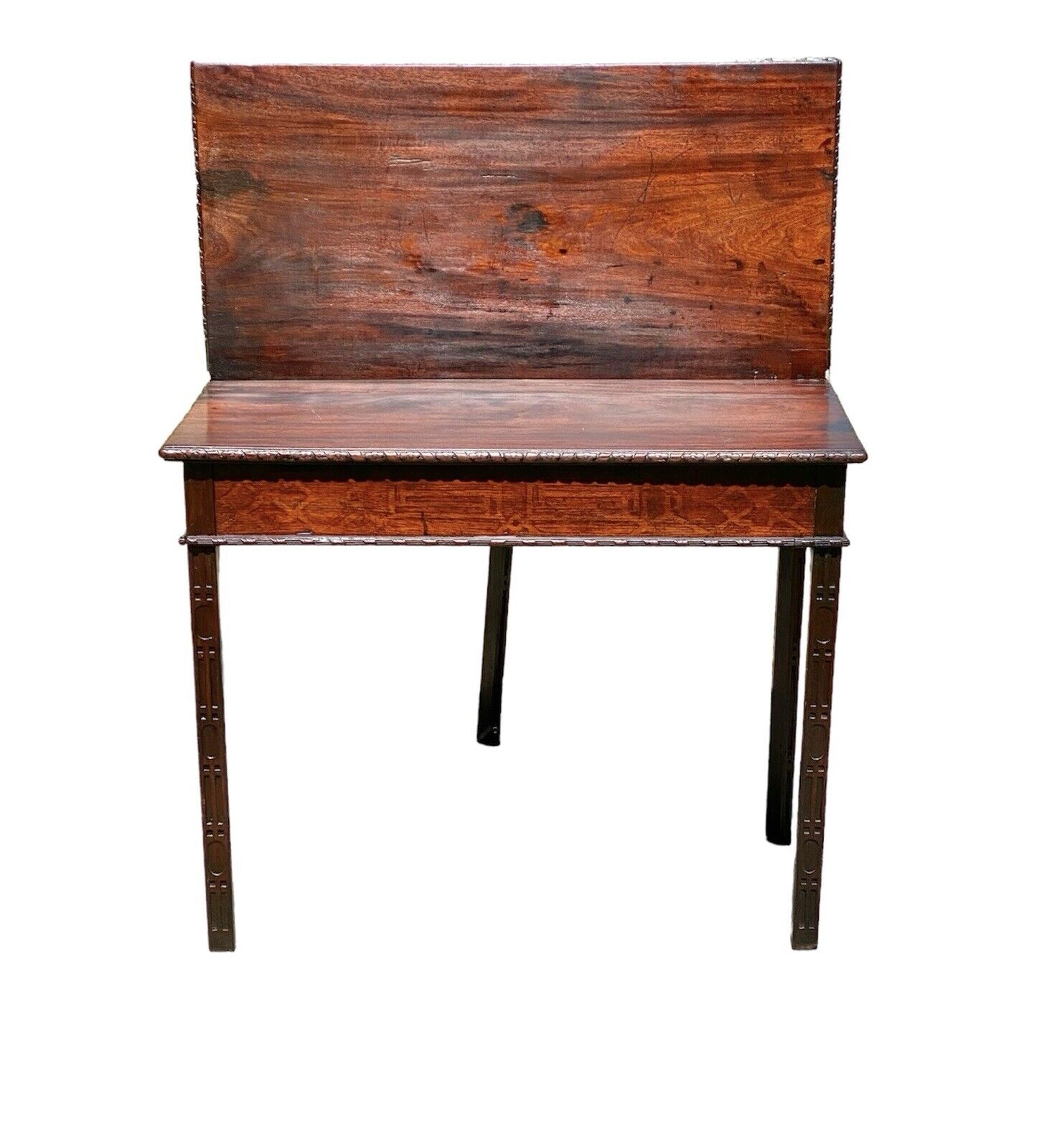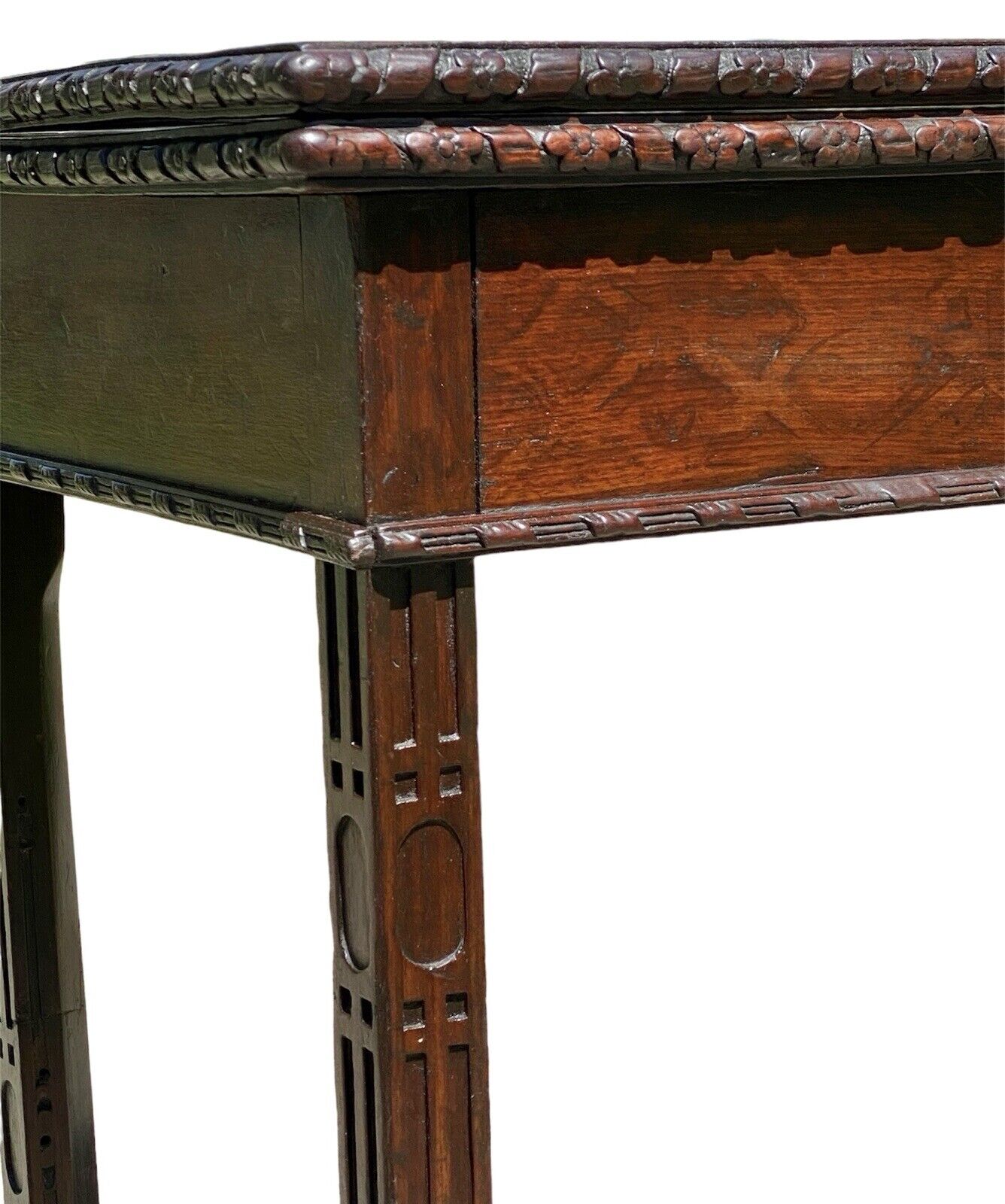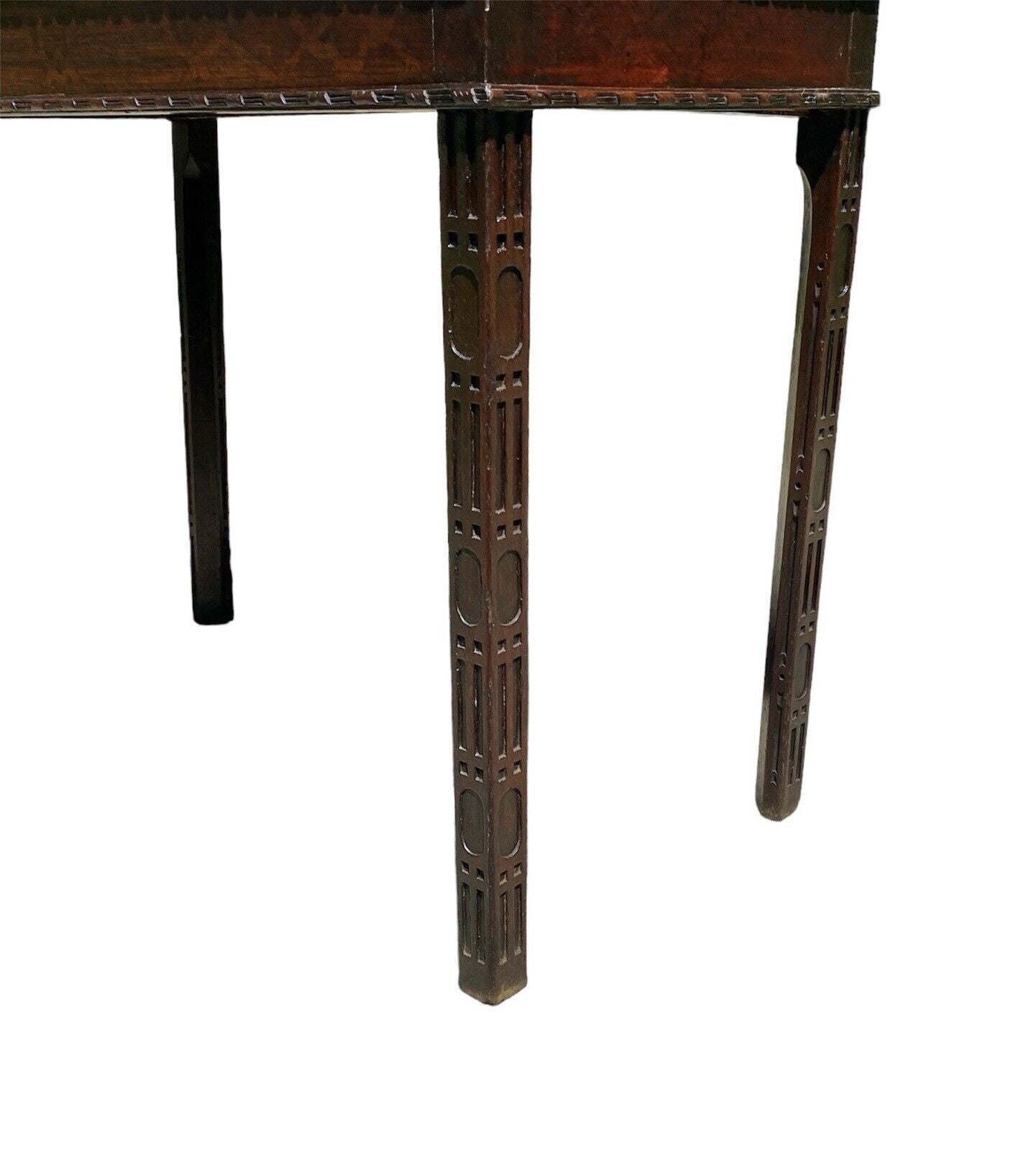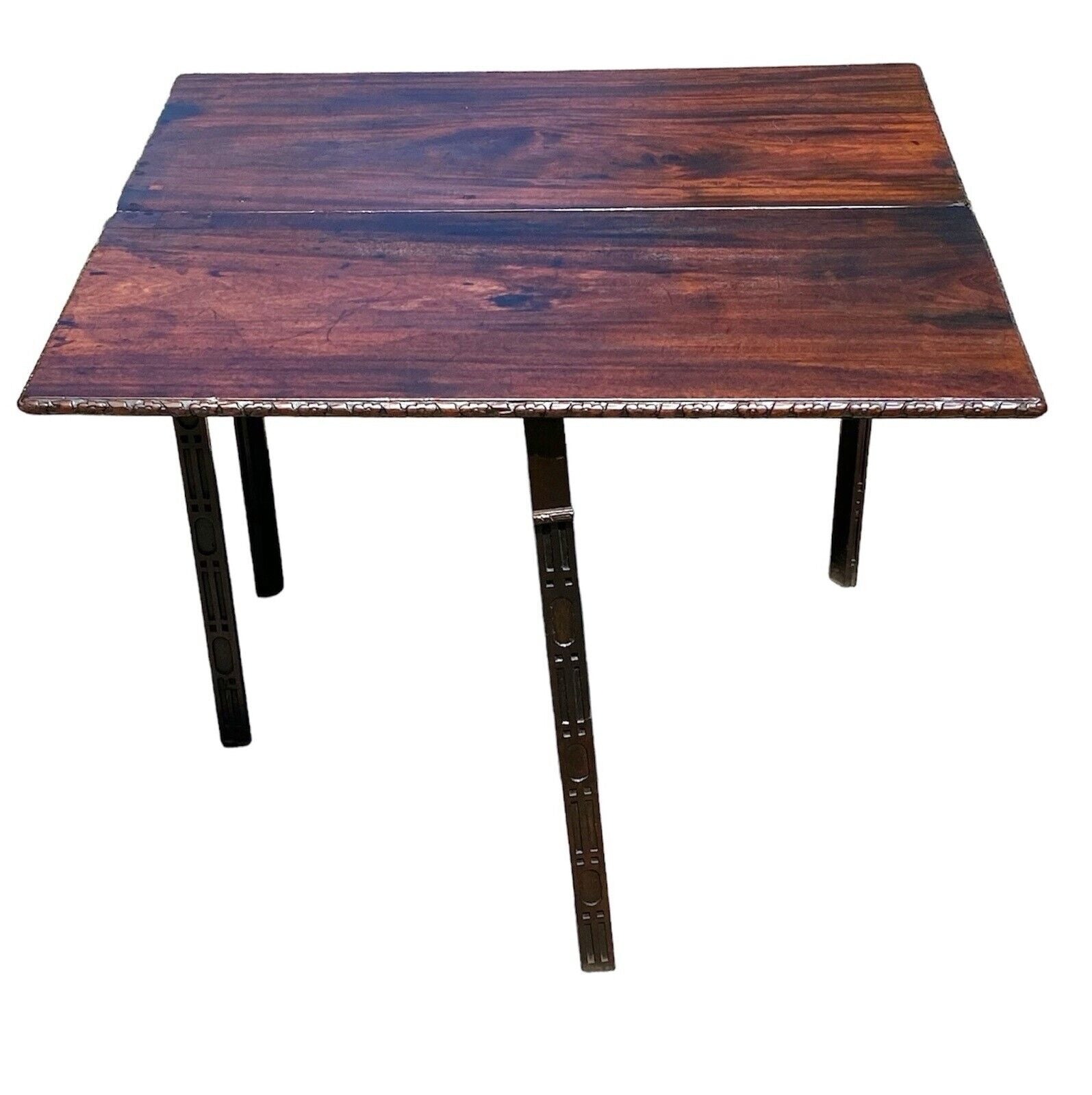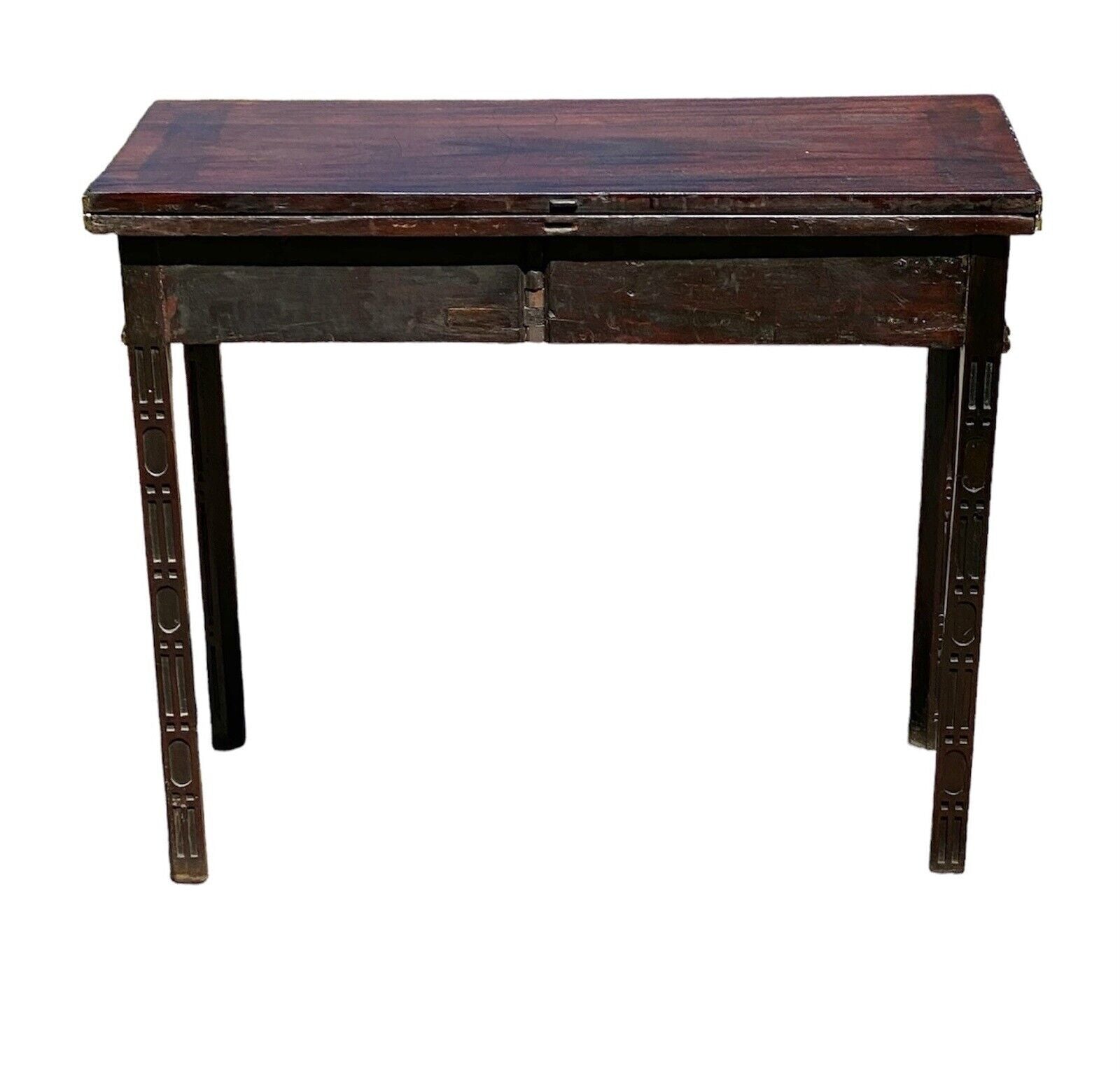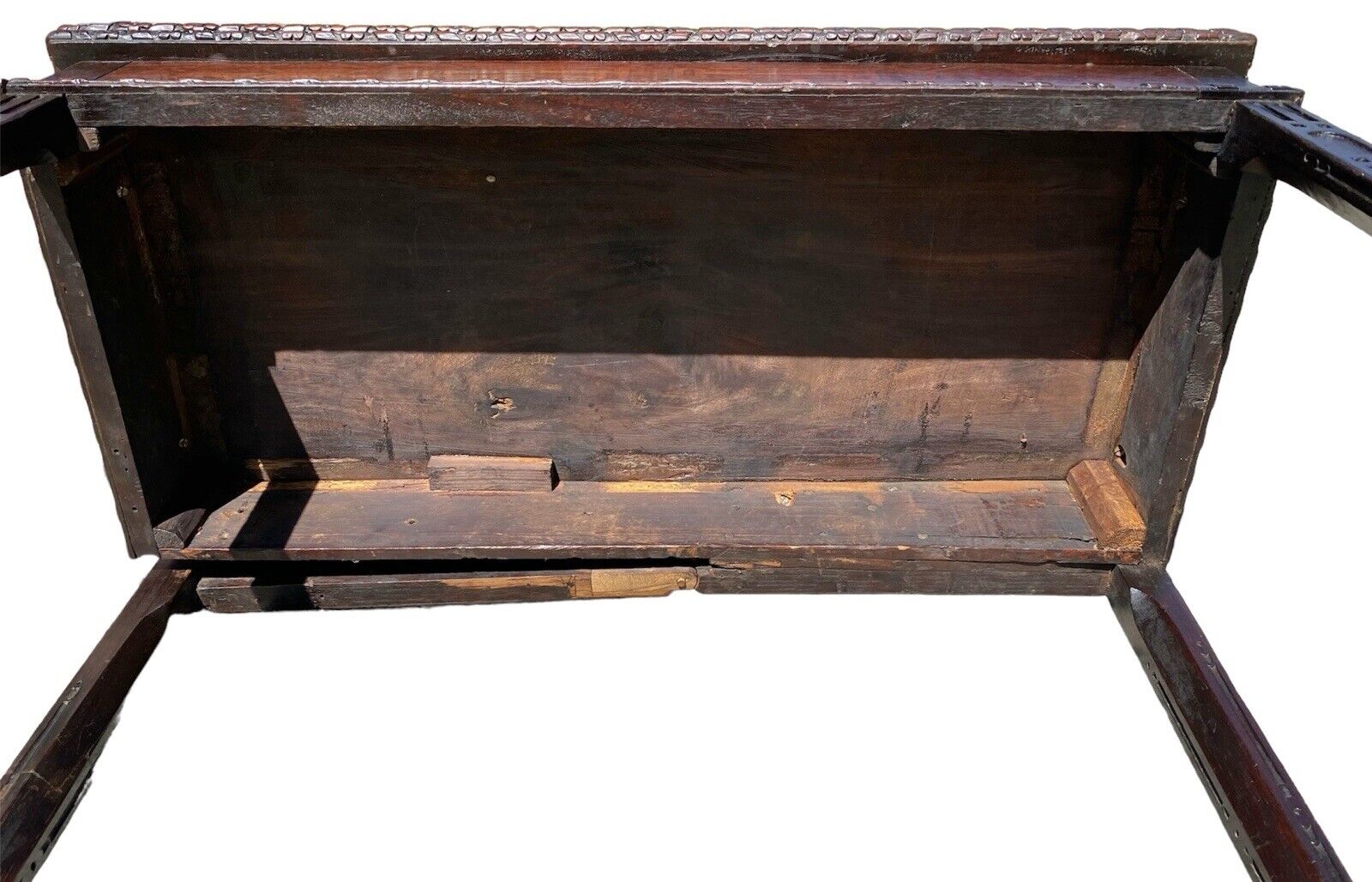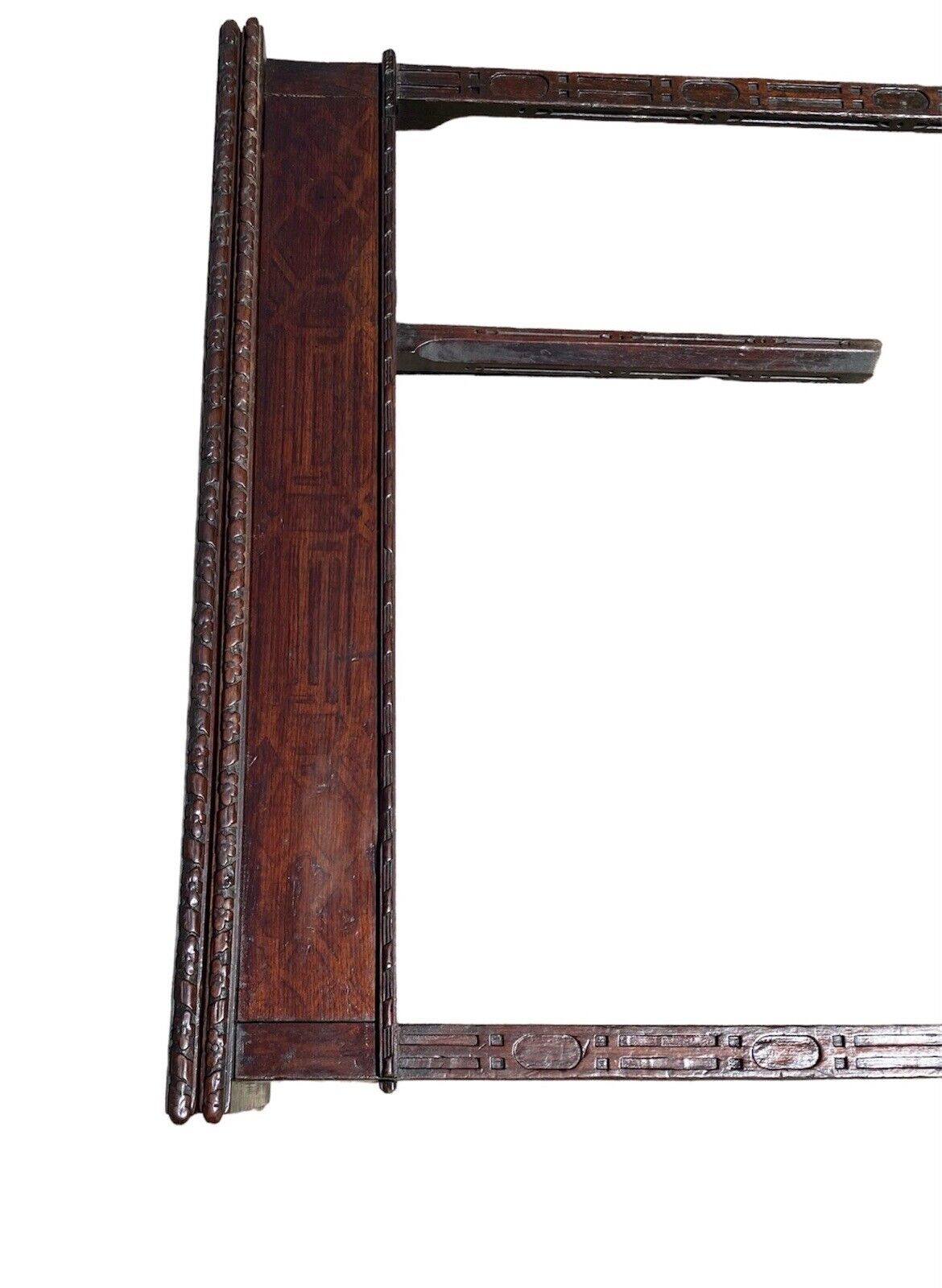Chinese Chippendale
Antique Chinese Chippendale Mahogany Card Table with Foliate Carved Edge CA 1760
Antique Chinese Chippendale Mahogany Card Table with Foliate Carved Edge CA 1760
Couldn't load pickup availability
18TH CENTURY ANTIQUE CHINESE CHIPPENDALE MAHOGANY CARD TABLE WITH FOLIATE CARVED EDGE & COUNTER-RELIEF CARVED LEGS CA 1760
Bay Colony Antiques is extremely proud to offer for sale this exceptional 18th century antique Mahogany Chinese Chippendale card table. The table was likely made in England, but we are exploring the idea that it could have been made by a London trained cabinetmaker working in America in the traditional high English style. We feel that we have this priced very competitively, and if we can confidently attribute this to either a Virginia or South Carolina cabinetmaker, this extremely rare table would become even rarer, and easily double in value. The carvings on the legs are very unique and would probably be the easiest avenue to attribute a specific cabinetmaker. We’ve exhausted our reference library, but as always will amend the listing as we conclude any more information. Colonial Williamsburg has a similar table (item no. 1936-353) that they have dated between 1755-1765. We believe this table was made right around the same time and believe this is a superior table in just about every regard. We take great pride in being able to offer our clients museum grade antique furniture at a fraction of the cost of large auction houses like Sotheby's & Christies.
The table has an oblong rectangular top comprised of two solid Mahogany boards that open to a square. The Mahogany exhibits a beautiful grain pattern and it’s quite remarkable given the density and size of the boards that they haven’t developed any major age splits or significant warping after 250+ years. The top does have some moderate scratching & wear, but we wouldn’t recommend refinishing the piece as the surface is very old, likely original. The top and corresponding leaf have an exquisite foliate carved edge with a repeating pansy pattern. The table has a straight apron with either the silhouette of an applied fretwork decoration or the remnants of a painted Chinese Chippendale fretwork design. The fretwork pattern is noticeably different than the more common designs and was undoubtedly influenced by the novel patterns published in Thomas Chippendale’s “The Gentleman And Cabinet-Makers Director”.
The table rests on 4 spectacularly carved square Marlborough legs with a lamb's tongue carving on the inside edge of each leg. Oftentimes the back of the rear legs were not carved just to save a bit of time for the carver & because these were usually up against a wall when not in use. The back of the legs on this table are carved so the table can be enjoyed in all its splendor from any position. The gate leg operates as intended but has a slight crook when in the open position. We can ask our restorer to try to straighten it out if our end client desires. The outer facing edges of each leg is counter-relief carved with a superb geometric design of repeating ovals, rectangles, and squares. As we mentioned earlier, this hollow relief carving is very distinct and unusual. We’ve handled similar examples intermittently throughout our careers but can’t remember ever seeing this particular pattern. We’d also like to point out that each “inside” facing edge has an even more unusual design that beautifully complements the more prominent outer facing panels. The outer facing edges feature straighter lines with abrupt stops, while the inner edge carvings are rounder and a lot more fluid. The juxtaposition of the two antithetic forms greatly enhances each pattern in our opinion. If you've been in the market for a premium 18th century Chippendale card table we'd recommend this example for your consideration. While its exact origins remain a subject of exploration, its superior craftsmanship and uniqueness speak volumes. The table's remarkable preservation over 250+ years, coupled with its distinctive carvings and intricate design, solidify this card table as a truly special find & one we'll be hard pressed to top as tables of this caliber seldom make their way to market. The table measures 35 1/2” wide x 17 1/2” deep x 28 1/2” tall. When the top is flipped open the tabletop measures 35 1/2” wide x 35 1/2” deep.
Share

